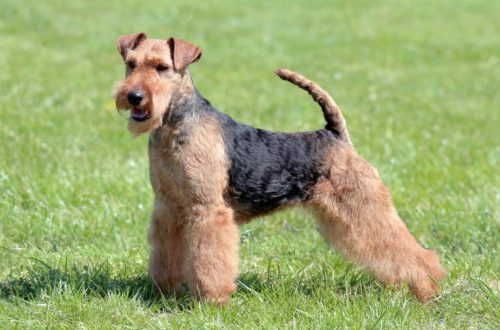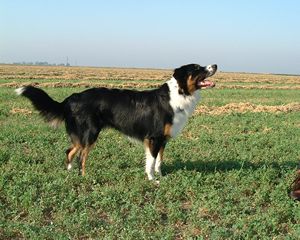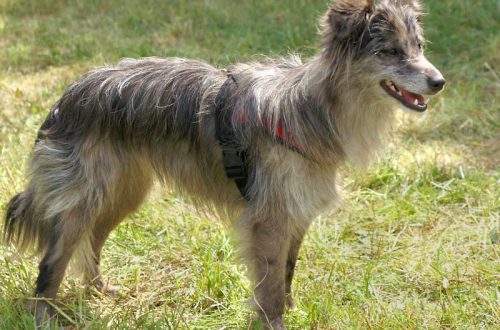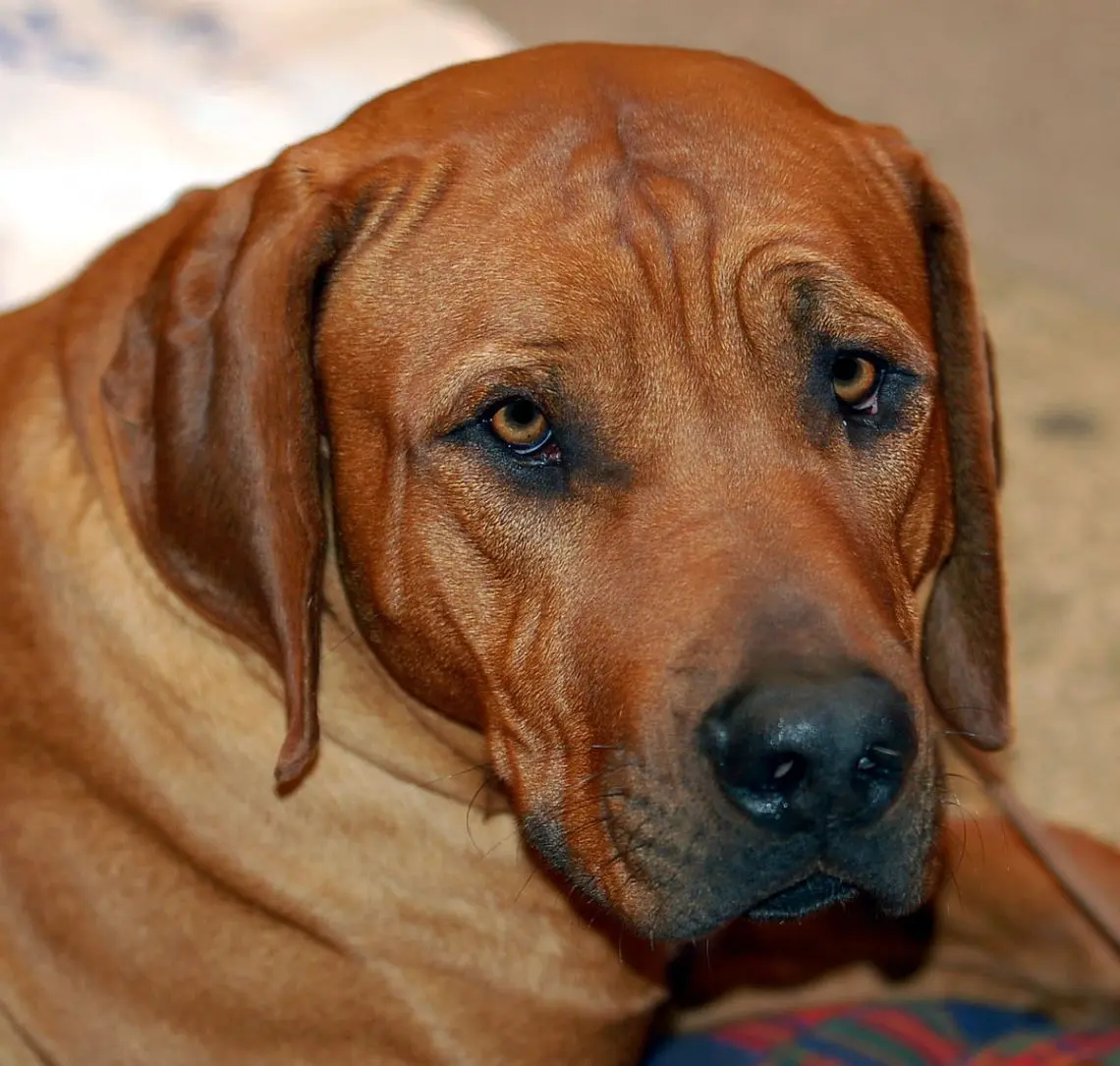
Tosa Inu (zeeg)
Other names: Tosa-ken , tosa , tosa-token , Japanese mastiff
Tosa Inu (Japanese Mastiff, Tosa Token, Tokyo Fighting Dog) is a breed of large molossoid dogs bred in Japan to participate in battles.
txheem
- Cov yam ntxwv ntawm Tosa Inu
- Lub sijhawm yooj yim
- Keeb kwm ntawm Tosa Inu yug
- The specifics of dog fighting in Japan with the participation of Tosa Inu
- Tosa Inu – Video
- Tosa Inu breed standard
- Character Tosa Inu
- Kev kawm ntawv thiab kev kawm
- Tu thiab kev saib xyuas
- Health and disease of the Tosa Inu
- Yuav xaiv tus menyuam dev li cas
- Tosa Inu Price
Cov yam ntxwv ntawm Tosa Inu
| Lub teb chaws ntawm keeb kwm | Nyiv |
| Qhov loj | loj |
| txoj kev loj hlob | 54-65 cm |
| Nyhav | 38-50 kg ib |
| Muaj hnub nyoog | txog 9 xyoo |
| FCI yug pawg | Pinschers thiab Schnauzers, Molossians, Roob thiab Swiss Cattle Dogs |
Lub sijhawm yooj yim
- The name “Tosa Inu” is derived from the Japanese province of Tosa (Shikoku Island), where fighting dogs have been bred since ancient times.
- The breed is banned in a number of countries, including Denmark, Norway, and the UK.
- The Tosa Inu has many names. One of them – tosa-sumatori – means that in the ring, representatives of this family behave like real sumo wrestlers.
- Tosa Inu is a rare breed not only in the world, but also in its homeland. Not every Japanese has seen a “samurai dog” with his own eyes at least once in his life.
- All Japanese mastiffs are proactive and make their own decisions in critical situations, anticipating the owner’s command and attacking without warning barking.
- The easiest way to get a tosa token is in South Korea, Europe and the USA, and the hardest thing is in Japan. However, it is the animals from the Land of the Rising Sun that are of the greatest value both in breeding and fighting terms.
- The breed is insensitive to pain, so it is better not to bring Tosa Inu to fights with fellow tribesmen in order to avoid injury.
- Representatives of the American line are an order of magnitude larger and heavier than their Japanese counterparts, since in the New World the breed is often used in weight pulling.
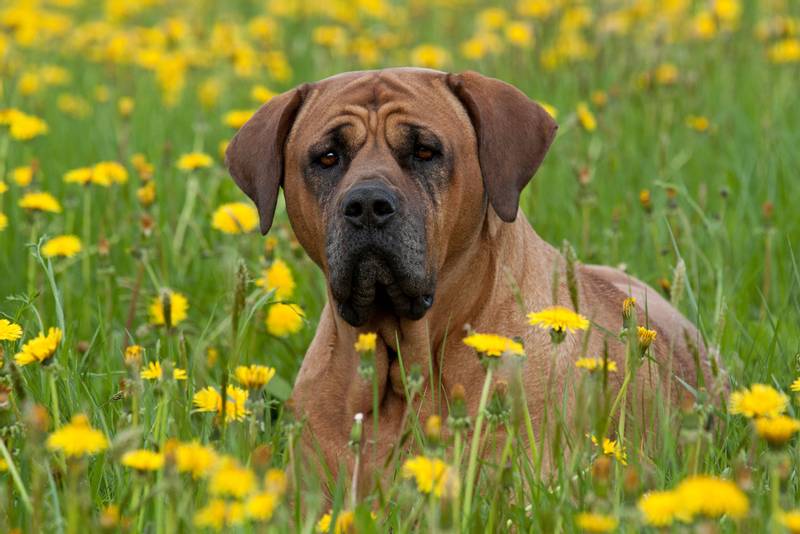
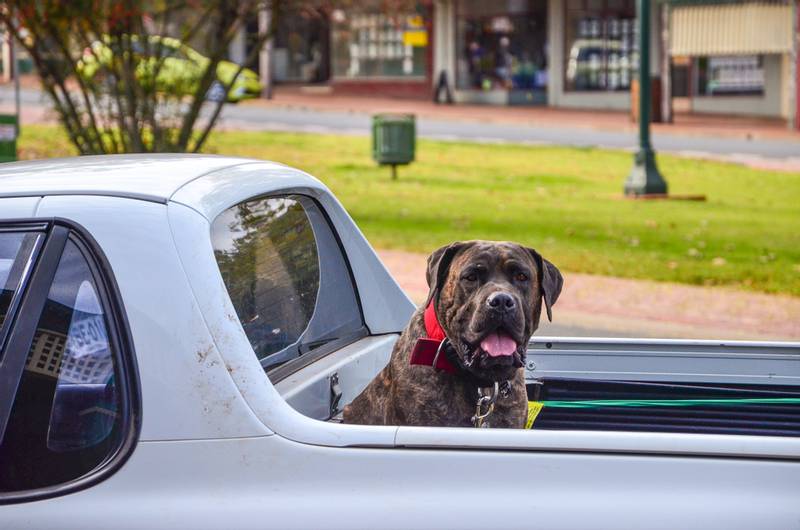

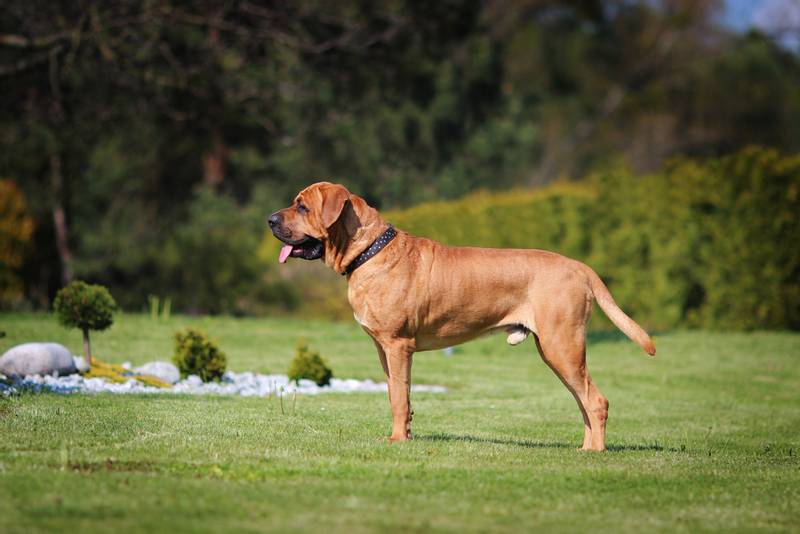
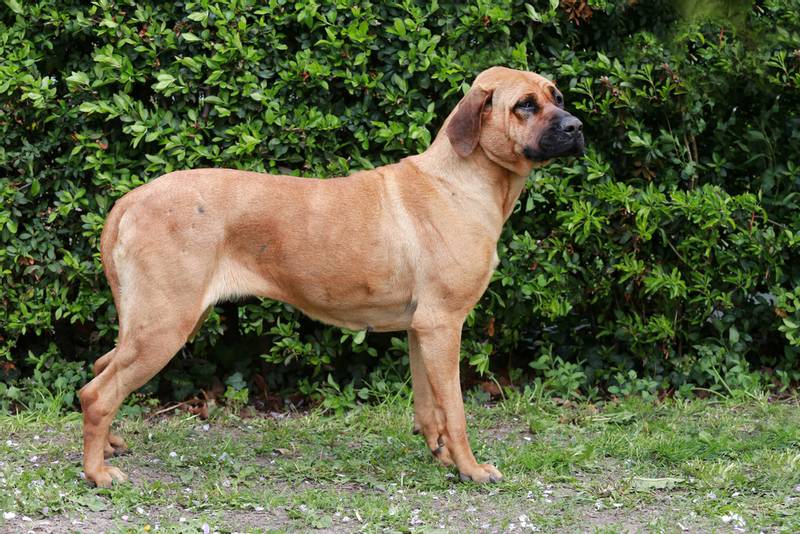
The Tosa Inu is an energetic companion with an outstanding fighting past and a distinctly Japanese equanimity of character. There is only one way to make friends with this muscular handsome man – by convincing him of his own strength and superiority. If this succeeds, you can count on respect and the most devoted love that exists. However, the breed prefers not to talk about its real feelings for the owner and people in general, so emotions for show and subservience are not exactly about Tosa Tokens.
Keeb kwm ntawm Tosa Inu yug
Fighting dogs like Tosa Tokens were bred in Japan as early as the 17th century. Events where animals were pitted against each other were especially respected by samurai, so for several centuries Asian breeders did nothing but experiment with genetics. After Emperor Meiji took over the reins of government in the 19th century, European breeders rushed to the East, bringing with them breeds previously unknown to the Japanese. Fighting dogs from Europe quickly proved their professional failure to samurai pets, which hurt the national pride of Asians, so in the Land of the Rising Sun they immediately began to “sculpt” a new, more advanced variety of wrestling dogs.
At first, pit bulls , staffords and akita inu , which were later joined by english bulldogs and mastiffs , passed on their genes for tosa inu . And in 1876, Japanese dog breeders decided to add traits to the breed of nobility and crossed their wards with German pointers and Great Danes. Surprisingly, but on the fronts of World War II, Tosa did not suffer, since the prudent Japanese managed to evacuate the breeding stock to the rear. So immediately after the end of the war, experiments to create an invincible fighting dog continued. In 1964, the Tosa Inu was standardized by the FCI and assigned to the Molossian section. Moreover, Japan continued to be in charge of breeding and further improving the working qualities of animals, despite the fact that nurseries of tosa-tokens began to appear in other Asian countries, for example, in South Korea and China.
The breed managed to get into Europe and the American continent only by the end of the 70s, however, its representatives did not become a living mainstream outside their own homeland. To this day, progressive breeders continue to acquire stud dogs and breeding females from Japanese kennels, whose livestock is unparalleled in the world, thanks to tough culling. Individuals from Korea are also considered a valuable acquisition, since they are “sharpened” for battles. At the same time, representatives of Korean lines lose to Japanese tosa in size and sculptural silhouette. But the European and American Tosa Tokens are more like companion dogs than fighters, although the protective instinct in them is still strong.
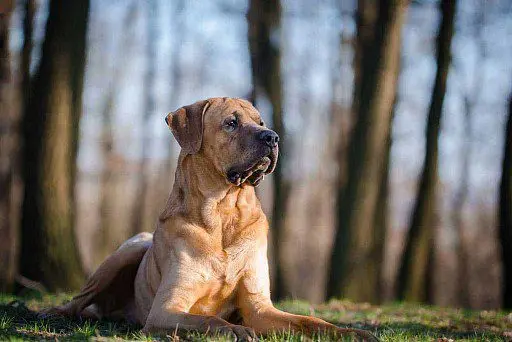
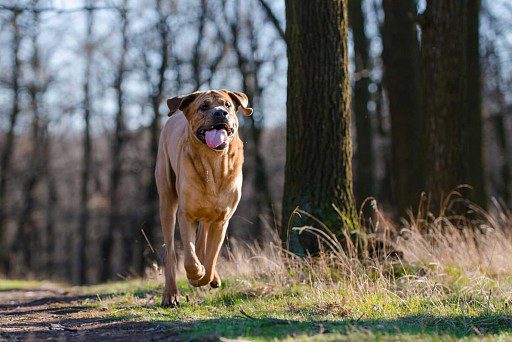
The specifics of dog fighting in Japan with the participation of Tosa Inu
Dog fights in the Land of the Rising Sun are not quite what Alejandro Iñárritu showed in his cult film. In Japan, animals are released into the ring to demonstrate the beauty of the fight and fighting techniques, and not with the goal of destroying each other. Tosa Inu performing in public do not fight to the point of bloodshed – for this the dog faces a lifetime disqualification. And even more so, it never comes to a fatal outcome.
The result of the struggle should be the complete suppression of the opponent: overturning him on the shoulder blades and holding him in this position, pushing the enemy out of the ring. At the same time, the attacking individual should not retreat from the other more than three steps – for such oversights, you can easily “fly out” of the game.
Fight to the point of exhaustion is also not practiced. If after a certain period of time (usually from 10 minutes to half an hour is allotted for a duel), the winner is not revealed, the show ends. By the way, a real Japanese Tosa Inu is not only power and techniques polished to perfection, but also a truly oriental endurance. A dog that humiliates itself in the eyes of the audience by whining or barking is automatically considered as struck.
As for championship titles, they are distributed very generously in Japan. Usually, the winner of a tosa fight is rewarded with an expensive blanket-apron, receiving the title of yokozuna. To make it clearer: a similar title is awarded to the most honored sumo wrestlers of the country. There are several more championship steps that a current four-legged yokozuna can climb. These are senshuken (National Champion), meiken yokozuna (Great Warrior) and Gaifu Taisho (Master of Fighting Technique).
This is not to say that dog fights in Japan are ubiquitous. This kind of national sport is practiced in certain provinces, which translates it into the category of exclusive entertainment. For example, one of the most prestigious nurseries is located in the town of Katsurahama (Shikoku Island). Here the tosa are born and trained for subsequent performances. By the way, you won’t be able to buy a Tosa Inu that won even in a single fight – the Japanese are extremely reverent about their own livestock, and they won’t part with champion dogs at all for any price.
Asian cynologists also make additional advertising for the breed, claiming that Tosa born outside the Land of the Rising Sun do not have the charisma and culture of behavior that their relatives acquire in their homeland. Perhaps that is why you can get a tosa-yokozuna in Japan only in two cases – for fantastic money or as a gift (from the authorities or members of the yakuza).
Tosa Inu – Video
Tosa Inu breed standard
The appearance of the Tosa Inu is a mixture of elegant impressiveness and restrained strength. Widely spaced front legs and a massive chest – from Stafford , streamlined silhouette and proud posture – from the Great Dane , brutal, slightly folded muzzle – from Mastiff : this breed has absorbed a variety of characteristics of its ancestors, and carried it out incredibly harmoniously. In terms of the solidity of the constitution, “samurai dogs” are real athletes, for whom very vague weight limits are established. In particular, the correct Tosa Inu can weigh both 40 and all 90 kg.
lub taub hau
All Tosa Tokens have a massive skull with a sharp, steep stop and a moderately long muzzle.
Ntswg
The lobe is convex-large, black.
Lub puab tsaig thiab cov hniav
The Tosa Inu has well-developed and strong jaws. The dog’s teeth are strong, closed in “scissors”.
Tosa Inu Eyes
The dark chocolate small eyes of Japanese mastiffs look penetratingly and at the same time proudly.
Pob Ntseg
The breed is characterized by high set ears on the sides of the head. The ear cloth is small, thin and tightly pressed against the zygomatic part of the skull.
caj dab
A pleasant solidity to the silhouette of the Tosa Inu is given by a powerful, muscular neck with a moderate dewlap.
ncej
The Tosa Inu is a dog with high withers, a straight back and a slightly arched croup. The chest of the representatives of the breed is wide and of sufficient depth, the stomach is elegantly tucked up.
nqua
Japanese Mastiffs have moderately sloping shoulders and pasterns. The hind legs of the animals are well muscled and strong. The angulations of the stifles and hocks are moderate but remarkably strong. The toes of the Tosa Inu’s paws, gathered in a ball, are “reinforced” with thick, elastic pads, and the paws themselves are rounded and of an impressive size.
Tosa Inu Tail
All tosas have tails thickened at the base, lowered down and reaching to the hocks of the legs.
Wool
The thick coarse coat looks very short and smooth, but it is precisely this type of cover that animals need in the fighting ring.
xim
The colors allowed by the standard are red, black, apricot, deer, brindle.
Disqualifying defects nyob rau hauv tsos thiab tus cwj pwm
There are not so many vices blocking access to exhibitions for Tokyo fighting dogs. Usually sumo dogs are disqualified for cropped ears, a blue tint of the iris, tail creases, as well as for anomalies in the development of the eyelid (inversion / eversion). Individuals with deviations in behavior will not be able to exhibit in the ring: aggressive, cowardly, insecure.
Character Tosa Inu
Due to the ban on breeding in a number of countries, the image of ferocious monsters that are not able, and more often unwilling to control their own aggression, has been fixed for the Tosa Inu. In fact, the Japanese mastiff is quite an adequate pet, albeit with its own characteristics of character and temperament. First of all, it is important to understand the purpose for which the breed was bred, and to be able to correctly assess the habits of the animal. Remember, the Tokyo Fighting Dog will not respect a timid and insecure owner. The owner of a representative of this breed should be at least a little samurai, able to assert his own “I” and let the four-legged pet understand who is in charge in the ring of life.
Tosa-tokens do not harbor natural hostility towards any unfamiliar person. Yes, they are a little suspicious and do not trust anyone one hundred percent, but if the stranger does not take threatening actions, the Japanese Mastiff will not settle scores – his ancestors were not taught this. At home, tosa is a good boy, what to look for. He is friendly to children, honors the traditions and rules of the family in which he lives, and does not arrange concerts due to the refusal of an extra walk or treat. But the territorial instinct among the representatives of this clan is developed by five, and no training methods can drown it out, so Tosa Inu are often found in the role of watchmen-guards. Another important quality of the breed is fearlessness. Tosa-token can be angry, teased, insulted, but not forced to run away.
The purebred Japanese mastiff is a calm, patient and orientally restrained creature. No wonder the representatives of this family are called “philosophers” for their slight detachment and periodic “withdrawal into themselves.” You should not expect a violent expression of feelings from four-legged sumo wrestlers either. Tosa Inu can love the owner to unconsciousness, but in the manifestation of emotions he will continue to bend his line, that is, pretend to be a coldish phlegmatic.
Outwardly brutal Tosa is too intelligent for such humiliating activities as idle talk and whining. Accordingly, if the pet is characterized by excessive talkativeness, there is reason to think about its origin. Tosa-tokens do not have a special friendship with other pets, but they do not see them as an object of persecution. Of course, no one canceled socialization from the first months of life, but in general, the breed does not differ in bloodthirstiness. Moreover, Japanese mastiffs are aware of their own physical superiority, so they do not attack small animals and children.
Kev kawm ntawv thiab kev kawm
Japanese breeders prefer not to talk about the secrets of training and preparation for dog fights, therefore, in raising an animal, they will have to rely on domestic basic OKD and ZKS programs. But first, of course, socialization. Walk the puppy outside so that he gets used to the noise and the presence of other people, introduce him to your pets and let him participate in your parties with friends – the dog should know by sight everyone who enters the master’s house.
It is also better not to forget about your own authority. Always go out the door and have dinner first, leaving the puppy to be content with a supporting role, do not let the young tosa lie on your bed and squeeze the baby less in your arms. A dog should see a person as a strong, just owner, and not a playmate or worse, a love-blind adoptive parent. In general, if not a specialist, then an experienced owner should be engaged in the upbringing of a tosa-token. Moreover, it should be one person, and not all household members who had a free minute.
Training Japanese mastiffs is a long and energy-intensive process. This is a very special breed, not devoid of a bit of stubbornness, which is in no hurry to execute commands and categorically does not accept raised tones. For this reason, Western cynologists prefer to use the method of positive reinforcement in training – Tosa Inu respond more readily to treats and affection than to strict reprimands. A good assistant in the formation of positive motivation can be a clicker used in combination with a treat.
In addition to commands, Tokyo fighting dogs are able to understand sign language and sound effects. Pointing at an object / object, clapping, waving, snapping fingers – if you are not too lazy to give a specific meaning to each of the above combinations, the Tosa Inu will easily remember them and instantly respond. As for bad habits, from which sumo dogs will have to be weaned, the most common among them is the desire to gnaw everything and everything. Usually all puppies sin with such pranks, but the Tosa Inu has a special scope in such matters.
Getting a puppy to forget his “biting” addiction to furniture and human hands is not easy, but real. For example, buy new, interesting toys, and hide the old ones. At first, an enthusiastic animal will gnaw balls and rubber squeakers brought from the store, and then, when he gets bored, you can return the old toy stocks. Sometimes a Tosa Inu is bitten and gnawed from idleness, so the more often a pet walks and trains, the less time and energy it has for destructive hobbies.
Tu thiab kev saib xyuas
The Tosa Inu is a space demanding dog and has no place in an apartment. The “Japanese”, limited in movement, quickly loses his restraint and self-control and begins to turn into a barking, nervous creature. That is why a house with a spacious yard, and ideally with a large garden plot, is what every Tosa Inu needs to maintain a serious, unflappable image.
Going to the other extreme, allowing the pet to live around the clock in the yard or aviary, is also not worth it. At night (even in summer), a four-legged friend must be taken into the room, having equipped an inviolable corner for him. Don’t worry, despite the size, the Tosa Inu is the kind of dog whose presence in the house you just won’t notice. These muscular “Japanese” are very modest and do not get in the way. But the mattress for tosa should be chosen softer so that calluses do not form on the elbows from friction with a hard surface.
In general, Japanese mastiffs are not the most suitable breed for a metropolis. Even if the pet easily comprehended the basics of OKD and behaves flawlessly while walking along busy streets, such a life does not cause him much joy. The need to constantly contact strangers, large crowds of people and the roar of public transport, if not unnerving, then kept in a slight suspense.
Tu
Pet care is always a chore. However, like all short-haired breeds, the Tosa Inu has an advantage here: they do not need to be constantly combed out. It is enough once a week to collect dust and dead hairs from the body with a rubber mitten or a brush with soft bristles. They wash sumo dogs even less often: once every three months, and better in general, as they get dirty.
What you have to tinker with a bit is with the pet’s face. Firstly, tosa tokens are born “slobbers” ( mastiff genes , nothing can be done), so get ready to go over the lips and chin of the dog with a dry rag several times a day. Secondly, the slight wrinkling of the skin on the head of animals requires certain procedures to avoid the appearance of dermatitis. In particular, “wrinkles” must be aired, cleaned and dried regularly. You can do all this with cotton swabs, wipes and disinfectant solutions like chlorhexidine or miramistin, as well as any salicylic-zinc ointment.
Tosa Inu will have to clean the ear funnel once a week. The ear cloth, which is tightly attached to the cheekbones, prevents air from entering, which stimulates the release of sulfur and the increased humidity inside the shell that the animal does not need. For this reason, the hearing organs of Tosa need daily ventilation – lift your ear and wave it slightly, forcing air into the funnel.
A tosa token is supposed to brush his teeth with a special zoopaste a couple of times a week. Solid vegetables and fruits are also suitable as a prevention of dental diseases. Dogs are always willing to nibble on something and will happily tinker with a tossed carrot or turnip. By the way, at the first signs of tartar, it is not necessary to immediately take the Japanese Mastiff to the veterinarian – sometimes deposits can be easily removed with a regular bandage soaked in chlorhexidine.
Taug kev thiab kev tawm dag zog lub cev
If the Tosa Inu does not participate in fights (and he does not participate if he does not live in Japan), you will have to puzzle over how to satisfy the dog’s need for physical activity. Usually breeders recommend long walks – two hours three times a day, as well as jogging behind a bicycle. In addition, endurance exercises are useful – for example, walking in a collar with weights, moving loads.
The only caveat is the age limit. It is possible to strain the animal with vigorous activity only when its skeleton is fully formed, because forcing a teenage dog to work intensively, you risk ruining its joints. Usually, individuals under the age of one year are simply taken out for a walk at a calm pace. You can also try slow climbs and short outdoor games. In the summer, it is more expedient to instill in the ward a love for swimming – the load on the skeletal system in this case will be more gentle. But strength training and weight pulling are best saved until the pet is two years old.
When walking in public places, the Tosa Inu must appear exclusively on a leash and in a muzzle. Even if at home a four-legged athlete pleases with exemplary behavior and obedience, do not forget that the genes of fighting dogs are in every individual. In addition, walking on a leash and “sealed” in a muzzle, the Tosa Inu will not give passers-by, experiencing a panic fear of dogs, complain about you and your pet to law enforcement agencies.
noj
Theoretically, the Tosa Inu is able to eat both industrial feed and “natural food”, however, Russian breeders agree that those individuals that are fed animal protein of natural origin, that is, fish and meat, grow healthier and stronger. The only negative of the natural menu is the time and effort spent on searching for and subsequent preparation of suitable products. For this reason, the owners of tosa-tokens traveling to international exhibitions and dog shows prefer to keep their wards on the “dry”.
Like all representatives of the canine family, offal is useful for Japanese mastiffs, as well as any lean meat from beef to horse meat. The four-legged “sumatori” fish is also respected and prefer to eat it raw, it is important to remove the bones from it first. But dogs are willing to tolerate a variety of cereals and vegetable shavings only on the condition that their share in the diet is negligible. So if you planned to save money by treating your pet with cereals, soups and salads with vegetable oil, keep in mind that this number will not work with Tosa Inu.
Japanese mastiffs love to please and, as a rule, do not refuse supplements – this is the first trap for a novice breeder. The fact is that the breed tends to overeat and gain extra pounds, which puts additional stress on the joints. That is why the dog’s diet must be carefully calculated and try not to deviate from the set course. Remember that the tosa, who spends most of the day outdoors, needs a higher calorie diet than a home resident. If a living in an apartment and a well-walked “Japanese” needs 1.5-2 kg of meat products and about 500 g of vegetables per day, then his yard counterpart needs to increase the protein part by 400-500 g.
Health and disease of the Tosa Inu
The average Tosa Inu lives up to 10 and much less often up to 12 years. Severe genetic diseases have not been recorded for the breed, however, the predisposition to dysplasia of the elbow and hip joints is a proven fact. Moreover, often the disease manifests itself even in the offspring of healthy parents, while in puppies obtained from sick producers, dysplasia is almost always found. Sometimes problems with the joints can also provoke old injuries, as well as constant stress on the bone apparatus (overweight in weight pulling, overweight).
They are susceptible to Tosa Inu and allergic reactions, while animals are characterized by various types of immunopathologies, for example, allergies to food, pollen, dust, veterinary drugs. Usually, allergic reactions provoke dermatitis, which is extremely difficult to deal with, so you should be prepared for such surprises. Urolithiasis and heart failure in Tosa Inu are diagnosed less frequently than joint dysplasia, but these ailments have not been finally defeated.
Yuav xaiv tus menyuam dev li cas


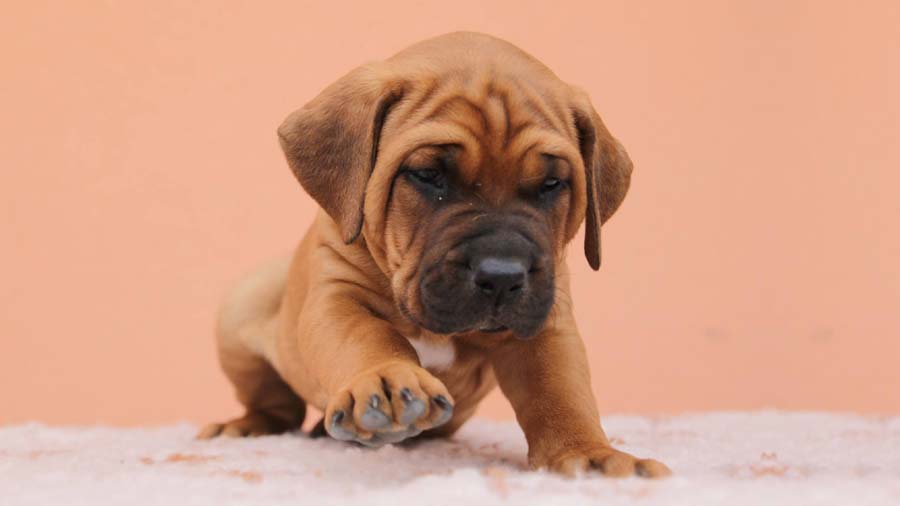

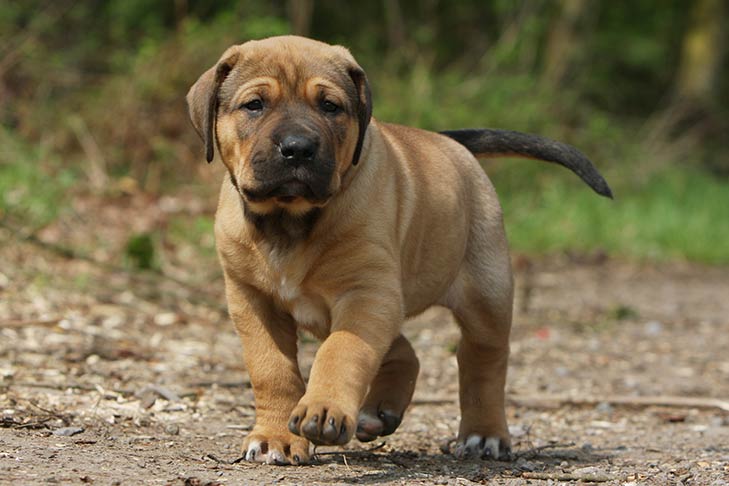

Even though the Tosa Inu is not considered a popular breed, the dogs still continue to suffer from commercial breeding. Unscrupulous sellers abuse inbreeding (closely related crossing) and mating with dubious sires in terms of pedigrees, which affects the quality of the litters. The harsh rejection of unhealthy puppies, which takes place in Japan, is not held in high esteem by domestic breeders, therefore even defective individuals are sold, which subsequently create problems for the owners. To avoid such deception, adhere to a number of general rules that will help you choose an honest breeder and a relatively healthy baby.
- No apartment kennels! Dogs should have enough space to move around and play. In addition, animals living in cramped conditions and poorly ventilated areas are always more likely to catch an infection.
- Check if the kennel is registered with the FCI or at least the RKF. If not, it is not worth buying any puppies in such a place, especially a Tosa Inu.
- Study the pedigrees of litter sires. It is better if these are not descendants of Russian lines, but foreign individuals. In addition, a male and a female should not be littermates, since the offspring from such parents is a big lottery.
- Test your puppies for courage by suddenly clapping your hands over their heads. Correct Tosa Inu will not rush off, flashing their heels, but will only listen to a sudden threat.
- See how the puppy moves for stiffness and limping that are typical of hip dysplasia. Be sure to ask to see the results of the examination of offspring for the presence of this disease in them.
Tosa Inu Price
Since it is still incredibly difficult to buy a Tosa Inu in Japan, most of our compatriots continue to buy individuals from American, European and even Russian lines. At the same time, it is important to understand that European and American individuals will resemble Japanese tribesmen only in terms of exterior – in order to get a seasoned character and combat skills, Tosa must be born in the Land of the Rising Sun, from Asian producers. As for the cost, the standard price tag for pet-class Japanese mastiff puppies in Russian and Ukrainian kennels ranges from 50,000 to 65,000 rubles. Promising offspring from international champions already cost about 75,000 rubles and more.





